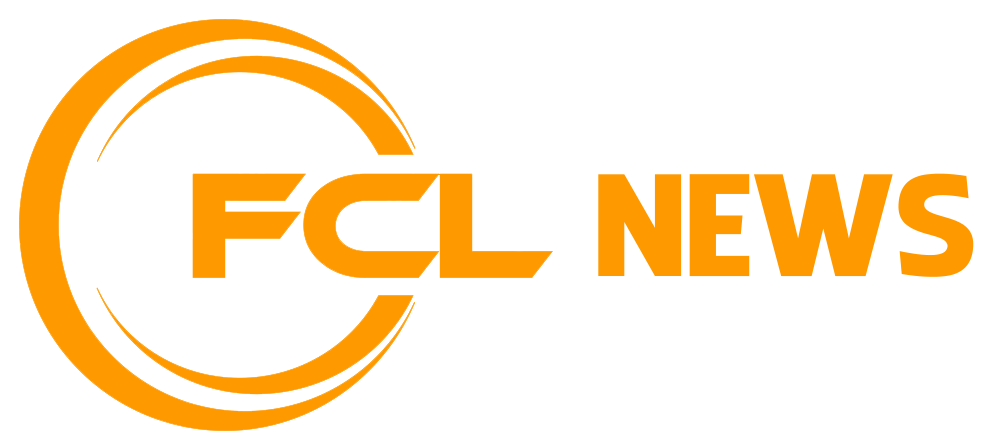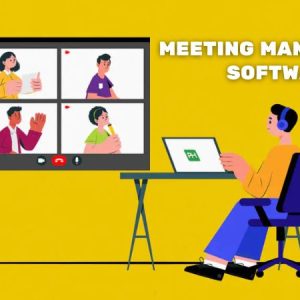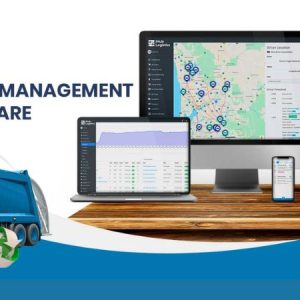With so many different change management solutions available, figuring out which is right for you is tough. You know you want to effectively plan, implement, and track changes within your business processes and systems but need to figure out which tool is best. I’ve got you! In this post I’ll help make your choice easy, sharing my personal experiences using dozens of different change management software in a variety of businesses, with my picks of the best change management tools.
What Are Change Management Tools?
Change management tools are software that help organizations smoothly implement and manage changes in business processes and systems. These tools enable structured planning, risk assessment, and tracking of changes, focusing on the human aspect of transitions. They facilitate communication and transparency, keeping stakeholders informed and involved, which is key to reducing resistance and misunderstandings.
A significant benefit of these tools is their role in enhancing employee satisfaction with changes. By ensuring clear communication and providing a clear roadmap of the change process, these tools help employees understand, adapt to, and accept changes more readily. This approach minimizes anxiety and fosters a more positive reception of organizational changes, contributing to a healthier and more productive work environment.
How I Selected The Best Change Management Tools
If you’re wondering how I selected the best change management tools, here’s where I’ll break it all down for you. First of all, I started with change management software that has high user review and satisfaction ratings. Then, using my experience in project management, I discerned what key criteria were most important for software for change management and compared how each of them stacked up against the rest.
I empathize with how much time it takes to source the right software for a job. I do this work so that you don’t have to. I’ve been using and reviewing change management tools for years so you can trust me to do the heavy lifting and compile all the facts you need to make your final decision.
Selection Criteria
After careful consideration, I’ve determined that these are the most important criteria when selecting the best software for change management. Here’s a brief list outlining the whats and whys of my selection.
User Interface (UI):
User interface is critical when choosing change management tools because it can significantly impact the tool’s usability, adoption, and effectiveness. An intuitive and user-friendly UI can help organizations to streamline their change management processes and improve their overall change management capabilities.
Usability:
Let’s not make change management any harder than it already is. Usability refers to how easy it is for users to learn and use the tool effectively. If a change management tool is not usable, it can lead to frustration and confusion among users, resulting in low user adoption rates and low overall tool effectiveness. A highly usable change management tool, on the other hand, can help organizations to streamline their change management processes, reduce errors, and increase productivity.
Integrations:
Software integrations are essential when selecting change management tools because they enable seamless communication between different systems and allow for the automation of various tasks. When implementing change management initiatives, multiple tools and systems may be involved, such as project management tools, customer relationship management (CRM) software, and collaboration platforms. Integrating these tools with change management software streamlines the entire change process.
Pricing:
Pricing is an essential factor to consider when selecting change management tools because it can significantly impact the budget allocated for change management initiatives. The cost of a tool should be evaluated in terms of its features, usability, scalability, and the expected ROI. Organizations should select a tool that provides the necessary functionality at a reasonable cost and aligns with their budgetary constraints.
ITIL Change Management Tools
These change management tools are specifically for IT service management teams. These are the tools you want if you’re looking for software engineering change management tools or solutions to manage change in DevOps or compliance-driven software processes.
- Sunview Software – best ITIL change management tool for DevOps
- BMC – best database change management software (but also has tons of features for software change management)
- Freshservice – best software change management tool for SMB
- Changegear – best ITSM for change management support & release management
Tools For Managing Ideas
Maybe you don’t have a “single” needed change and instead, want to set your team up for constant collaborative innovation. You want to create a space where people can bounce ideas around and get real-time feedback. These tools can help you do that. After all, effective change management stats with one good idea.
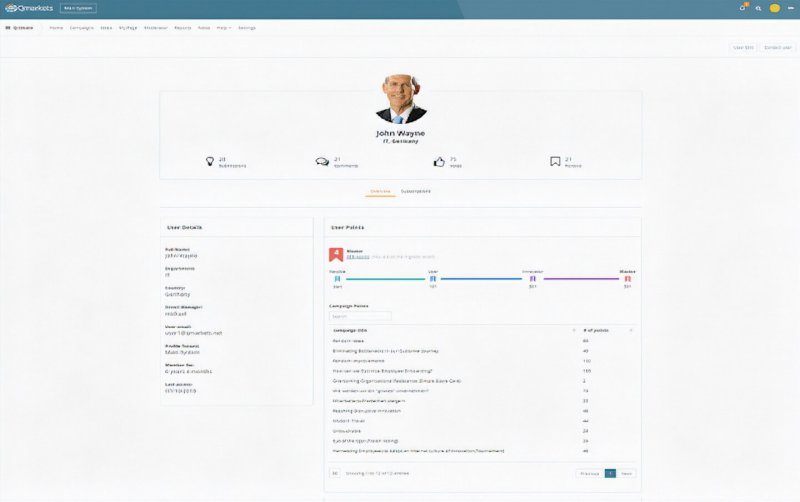
AppLearn tracks how users engage with your smart page elements and where said users come from.
- Qmarkets – A social software solution to engage employees and encourage cross-department thinking to submit innovative ideas as a part of an organized campaign or stand-alone suggestion. Qmarkets offers quote-based pricing and a free demo.
- Ideascale – Create digital “Communities” in order to crowdsource ideas, vote on suggestions, connect similar ideas together through predictive text AI, and offer points- and badges as incentivization for participants. Ideascale starts at $4,999/year and offers a free license version.
- Brightidea – Crowdsource on a company-wide scale with idea submission pages attached to suggested tags, in order to group similar projects – then track funding and implementation within a Kanban dashboard. Brightidea offers customized quotes and has a free demo.
Onboarding Tools
Bringing on new customers and/or users can be stressful and time-consuming for both you and the end-user. If your webpage or app has frequent updates, complex navigation, or CTAs that require an explanation that won’t fit on a site button, onboarding tools might be able to help. Onboarding tools help alleviate the barriers to entry of jumping into new UX and can turn visitors into longtime customers by fringing the FAQ to them.
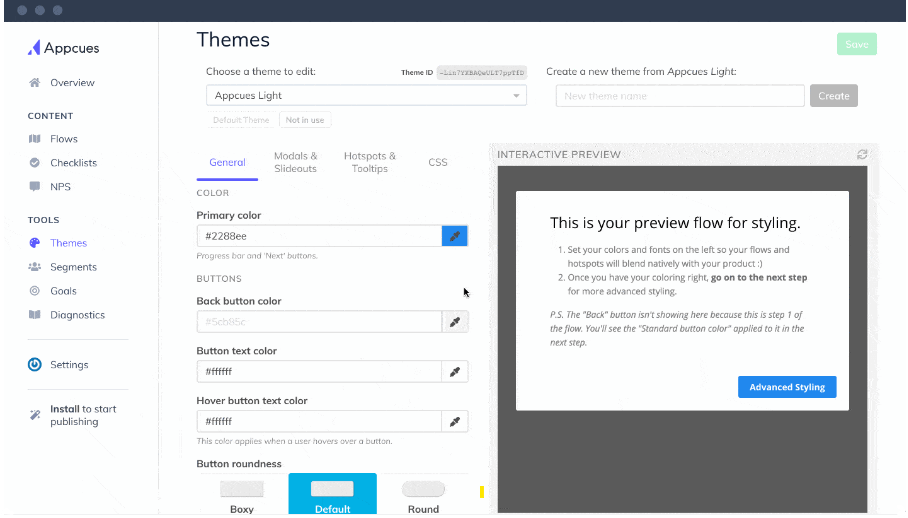
Create, design, customize, target, and publish flows, tooltips, and modals with Appcues.
- Appcues – Announce changes and introduce users to new additions to your product with feature call-outs and point-and-click walkthroughs and then monitor the impact of your onboarding system through various available analytics. Appcues start at $649/month for 3 users and offer a free demo.
- Enboarder – Customized welcome messages for new employees, onboarding checklists and equipment requests, star-based ratings for training services, and more. Enboarder allows you to adapt employee journeys based on data and feedback. They have custom pricing models available upon request and offer a free demo.
- Intercom – Employ chatbots to funnel interested parties towards your service, targeted messages to onboard and activate customers, and provide personalized help at scale with a collaborative inbox, automation, and self-service support. Intercom starts at $87/month and offers a free 14-day trial.
- Qstream – Software for ongoing staff training with features to identify skill gaps and track engagement based on end-user interaction. Various performance and ROI analytics can help you cut things that aren’t working. Qstream starts at $50/user/month and offers a free demo.
Tools For Customer Success Management
It’s hard to excel in any business if you don’t have a solid customer service strategy that can incorporate areas of change like complaints and mediation, growing or shifting consumer base, and marketing outreach projects. These tools can help you navigate many of the above concerns and more.
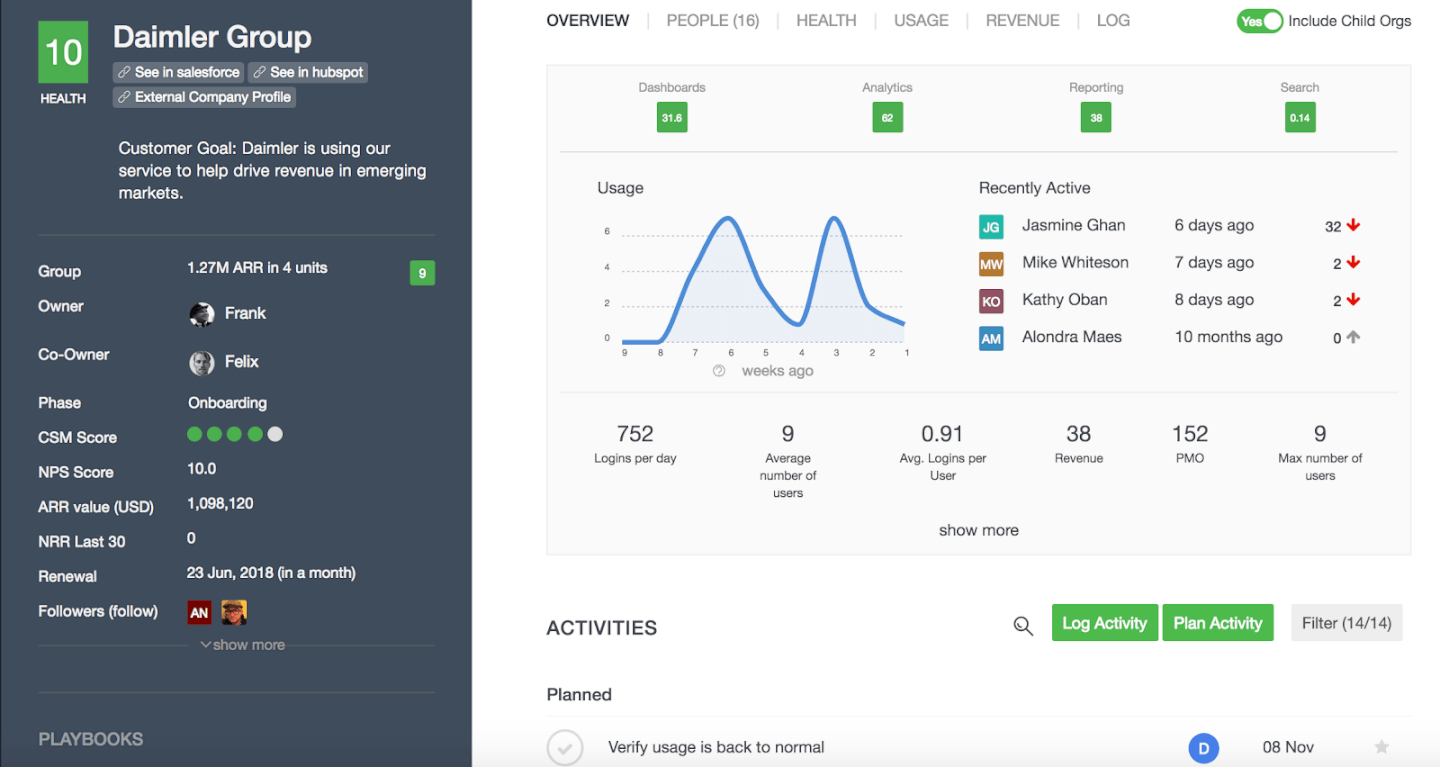
Planhat brings your customer data together from different sources to display in a single dashboard.
- Planhat – A Saas that helps manage customer service initiatives by integrating multiple platforms (like Salesforce and Zendesk) with features for customer overviews, onboarding and revenue management. Planhat starts at $500/month (plus $1/additional user/month) and offers a free demo.
- Gainsight – Capture every customer interaction in a robust database, access reporting to aid calls-to-action, and leverage both one-on-one conversations and personalized, automated emails. Gainsight starts at $500/month and offers a 14-day free trial of any subscription tier. They also offer a free version of the app, limited to one product and up to 500 emails per month.
- Natero – Compiles customer emails, chats, meetings, support tickets, billing history, and product usage, identify at-risk customers, prep for upcoming renewals, and monitor customer health scores through custom KPIs, CSM scores, support tickets, NPS, and more. Natero offers customized quotes and offers a free demo.
- CustomerSuccesBox – Monitor account health, set up customer onboarding tools, and segment accounts by type or need to better customize your CSM approach for each. Provides milestones, customizable alerts and campaign feedback. CustomerSuccessBox starts at $499/month and offers a free demo.
Employee Onboarding Software
Team growth, turnover, contractors, promotions, interns or co-op students…there are so many reasons you might need to automate parts of your training regimen to take the stress off of both management and trainees. Use these tools to integrate new hires with minimal downtime so that they can hit the ground running and immediately feel like part of the team.
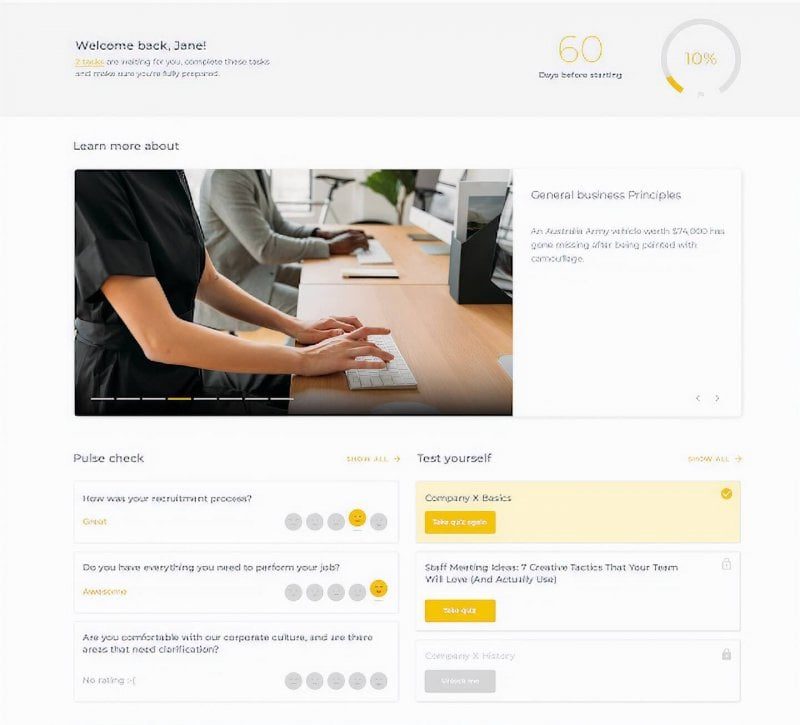
Talmundo offers ways to help automate HR administration and employee onboarding.
- Talmundo – Get new hires integrated into company workflow with custom roadmaps, mobile and PC options for engagement, and a feedback system for new recruits.
- KiSSFLOW – Automated workflows, case management, fluid forms, visual workflow, task management, and reports and analytics are just some of the features you will have access to.
- Workday – One cloud ERP system for finance, HR, and planning with machine learning capabilities that helps identify risks.
- Docebo – Centralize organize courses, distribute and manage online and instructor-led training, track certifications and measure results with dashboards and custom analytics.
Employee Engagement Tools
Don’t let routine and complacency define your team. Help people come together, collaborate, create, discover, bond, develop and process new ideas through tools designed to boost employee engagement. Successful change needs activated and engaged employees.
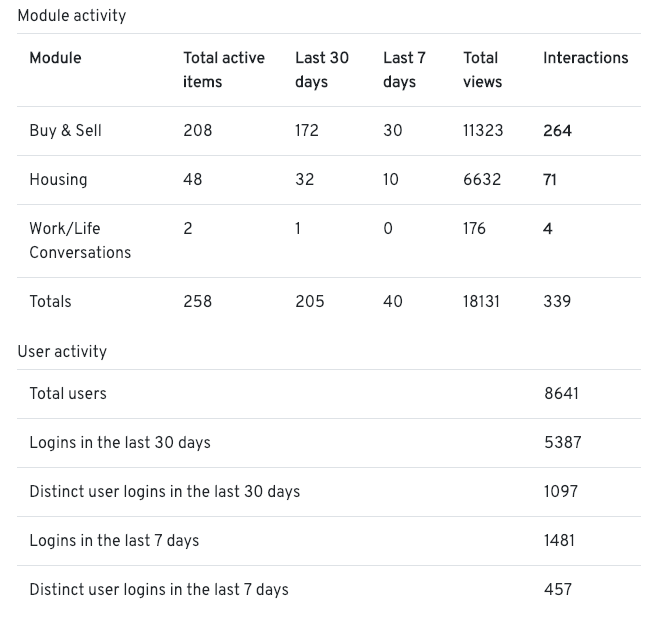
OfficeAccord lets employees connect about day-to-day concerns while analyzing interactions.
- OfficeAccord – Automated alerts sent to targeted employee groups, community management for everything from company events to ride share opportunities, and monitor important dates like birthdays and start date anniversaries. OfficeAccord starts at $500/month for up to 500 users and offers a free demo.
- Qualtrics – XM Platforms used to collect, understand, and take action on experience data; reports and analytics suggest which products and services to build-out. Qualtrics starts at $1500/year and offers a free trial as well as a free version with limited features.
- TINYpulse – Real-time employee feedback with employee surveys, tools for onboarding and engagement, and exit interview capabilities. TINYpulse starts at $5/month/user and offers a free trial.
- Honestly – Employee pulse surveys on nine metrics of engagement, engagement reports, and real-time dashboard to highlight KPIs. Honestly starts at $4/user/month and offers a free demo and/or free trial.
- Officevibe – Employees can share anonymous feedback and managers receive visual weekly reports that identify the issues specific to your workplace. Officevibe starts at $4/user/month and offers a free version.
What’s In Your Change Management Systems?
You probably have dozens or hundreds of things to consider as you implement something new and transition away from the old. Change management tools can make leading change less daunting for yourself and for your team.
What software, tools or skills do you find the most handy for navigating big or small company changes? Share your ideas in the comments below.
More change management advice: check out my podcast episode where PM Alexa Alfonso talks about how to manage process change.
And for regular updates on how-to guides, podcasts, and digital project management articles, subscribe to The DPM Newsletter. See you there!
